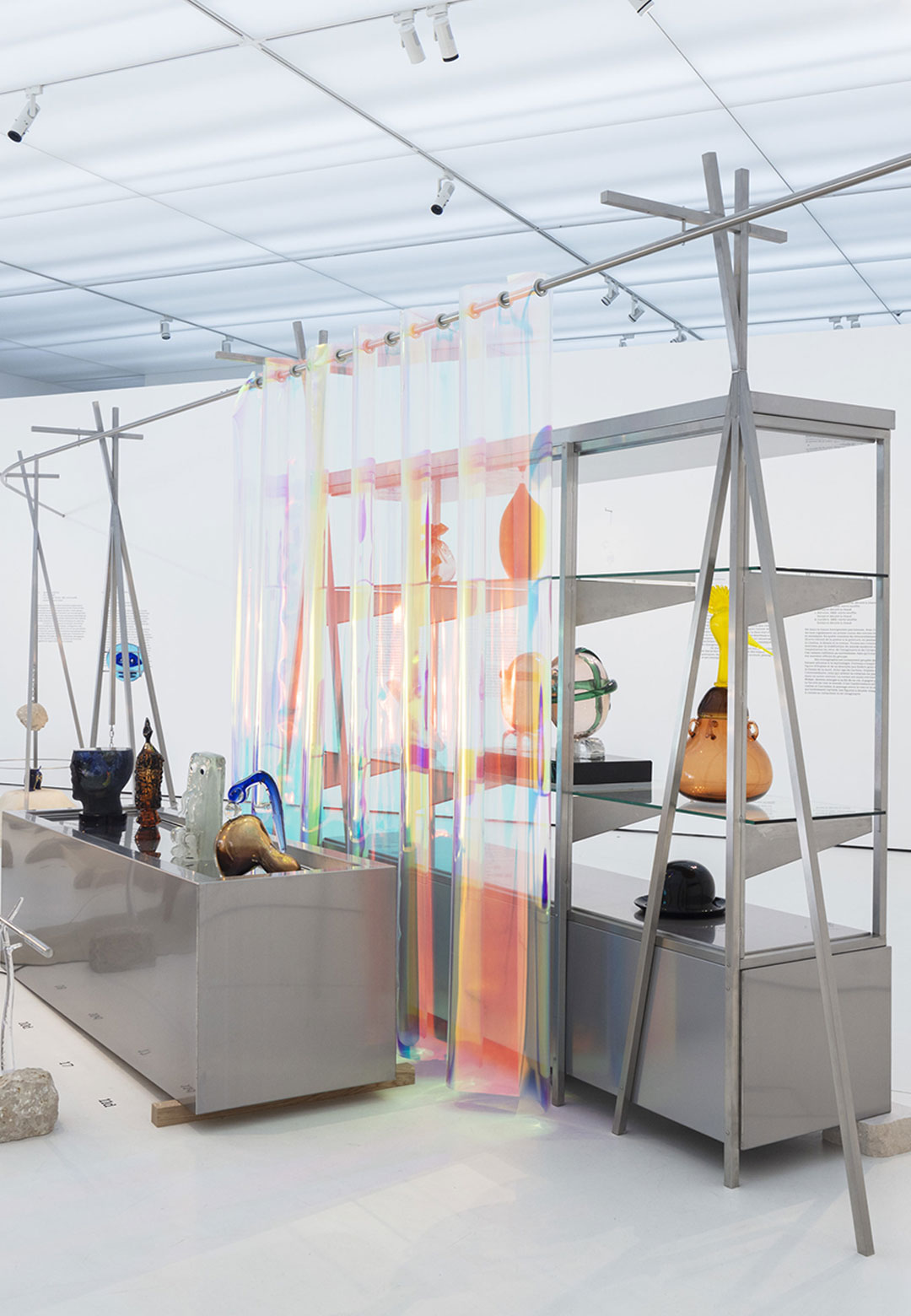In 1924, French writer and essayist, André Breton published his magnum opus, Manifesto of Surrealism, catalysing one of the most significant artistic movements of the 20th century. In 2024, a century after this inception, Musée cantonal des Beaux-Arts (MCBA), Photo Elysée and mudac come together to bring forth an experience steeped in Surrealism—featuring a diverse collective reflection of the movement that influenced the last 100 years immensely. mudac sets the retrospective in motion with two exhibitions: Objects of Desire. Surrealism and Design and Alchemy. Surrealism & Glass Art. The Alchemy exhibition, on view from March 8 to August 4, 2024, invites viewers to look back at the origins of mudac’s contemporary glass art collection—the largest in Europe. “Glass works by Salvador Dalí, Marc Chagall, Jean Cocteau, and Max Ernst trace the links between the history of the collection and the surrealist movement. Alchemy will also bring together contemporary works—some displayed for the first time—that attest to the legacy of the movement among artists,” reads the official release.
The art exhibition begins with a look at the legacy of Venetian studio master Egidio Costantini. From 1950 onwards, he created numerous works in collaboration with artists from different backgrounds, committed to restore glass to its former glory by using it as a medium for art. Taking cues from sketches by the artists, the glassmaker sculpted them with his own sensibility. Costantini once said: “[…] the drawing gradually disappears, and the new work brings out the soul of the artist and that of the glassmaker.”
In the late 1950s, he submitted a project to the patron Peggy Guggenheim. With a vision of glass as an essential material of the 20th century, Costantini invited artists such as Arp, Pablo Picasso, Ernst, and Chagall, among others, to explore the potential of the material. The artists’ sketches were realised meticulously by the Italian master in his Murano glass workshop called La Fucina degli Angeli—the Forge of the Angels—by Jean Cocteau. An ensemble of 36 works of glass art was brought to life.
Peter and Traudl Engelhorn, art lovers, captivated by the possibilities of glass, acquired 36 of these pieces, created between 1959 and 1970, to which two were added in 1991. In 1970, however, the couple decided to donate their collection to the Musée des Arts Décoratifs de la Ville de Lausanne—now known as mudac, Museum of Contemporary Design and Applied Arts. The pieces created at the Forge of the Angels joined the mudac collection, now comprising 31 pieces; four of these artworks find a place in the Alchemy exhibition alongside pieces in pâte de cristal produced by French firm Daum, in collaboration with Salvador Dalí, a pioneer of Surrealism.
The historic pieces are accompanied by contemporary glass works from the mudac collection—testimonies of the legacy of the century-old movement. The pieces by designers and artists such as Studio Job and Tillie Burden, speak of the freedom that Surrealism embodies, continuing to serve as a means of escape from the monotony of the real world.
The scenography of Alchemy is designed by mudac and conceived by Geneva collective GALTA. The fantasy workshop draws inspiration from a range of imageries from the field of glass art. Based on the chapter L’Art du Verre (The Art of Glass), taken from Diderot and d’Alembert’s famous Encyclopédie Universelle, the immersive installation features scenographic elements inspired by engravings that illustrate the work. The oven is represented by a sand volcano, the water used to cool the glass pieces appears in the form of a fountain, rails running through the exhibition space allude to the way in which the raw materials were transported, seats transformed pedestals reference chairs used by craftspeople when hot-working the material, and stylised glass-blowing canes scattered throughout. Some more contemporary references highlight the workshops of contemporary glassmakers and depict the transmission of this technical know-how through generations.
The set designers were guided by the surrealist exhibition of the inter-war period. A metal shelf, displaying a range of surrealist objects in the show, recalls an emblematic device photographed by Man Ray in 1936 at the Charles Ratton gallery in Paris. In the words of the GALTA Collective, the scenography design “shows the craftsperson’s workshop as a place where prophetic phenomena with secret correspondences occur ‘by chance (or as if by chance)’, to use a phrase from Max Ernst. Matter is perceived through its constant metamorphoses; it is dreamt of as flowing with forces, influxes, and currents.”
‘Alchemy. Surrealism & Glass Art’ will be on view from March 8 to August 4, 2024, at mudac in Lausanne, Switzerland.






 Sign in with email
Sign in with email










What do you think?